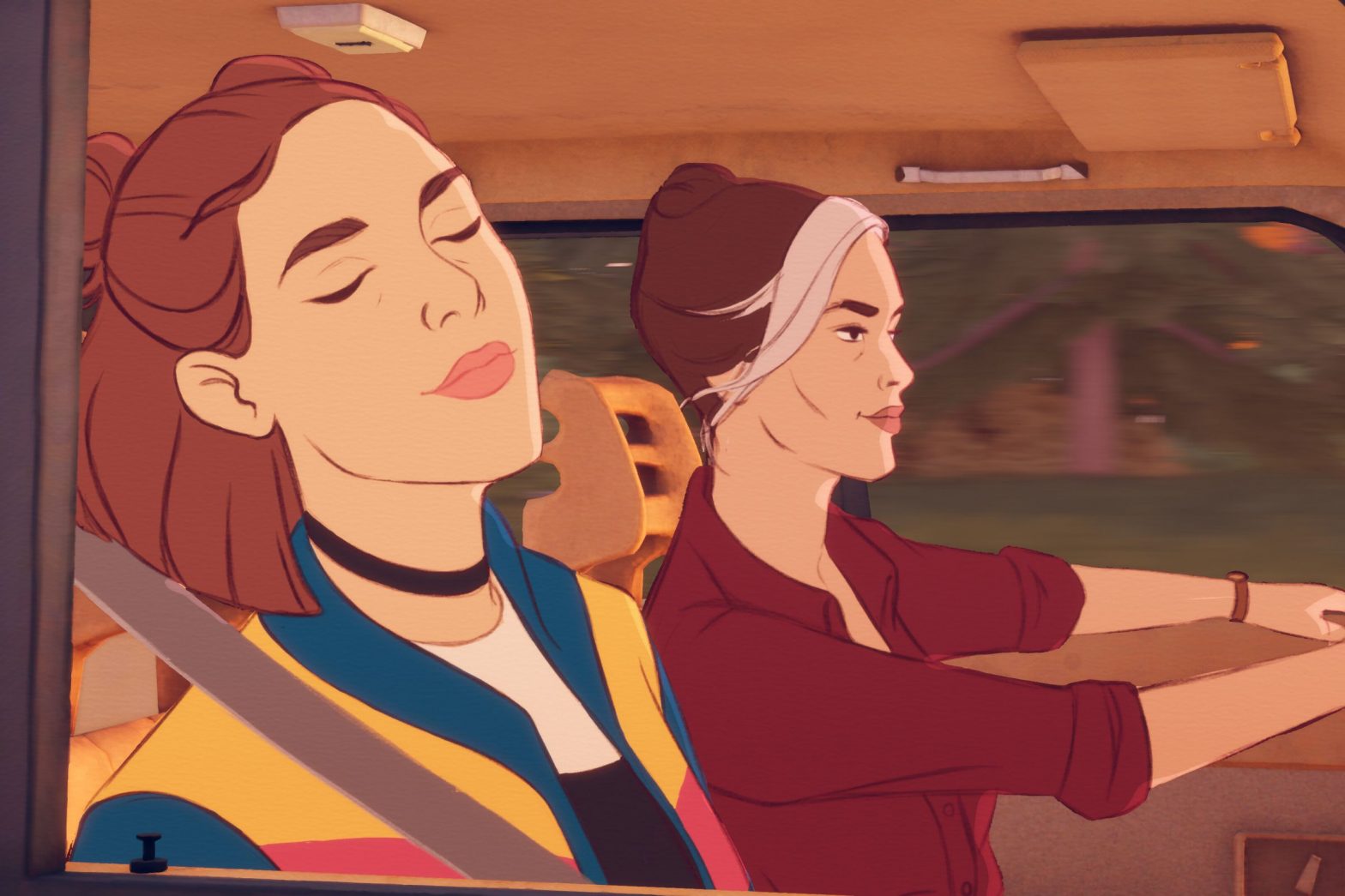/
A brief but rewarding mystery starring Keri Russell and Kaitlyn Dever.
Share this story
:format(webp)/cdn.vox-cdn.com/uploads/chorus_asset/file/25369082/ss_a408fa5bef976c37712481bf5f628f526802df2a.jpg)
Image: Annapurna Interactive
You could breeze through Open Roads, the new mystery game from publisher Annapurna Interactive. It’s only around two hours long, and it isn’t the kind of game where you’re likely to get stuck. There are no real puzzles to solve or obstacles to overcome. Instead, you steadily move through a story about a mother and daughter discovering long-lost family secrets while on a road trip together. But the game is filled with so many fun details and intriguing mysteries that it’s hard not to get caught up in it.
“We really want players to feel like they have to go looking for things,” says executive producer Amy Fincher. “And if they do, they get rewarded — especially if they’re curious by nature.”
Open Roads is what’s often derisively called a “walking simulator.” Similar to games like Firewatch or The Invincible, it’s a first-person experience that’s about exploring an environment, reading notes, and chatting with other characters along the way. In the case of Open Roads, you play as Tess (voiced by Kaitlyn Dever), a 16-year-old who has just lost her grandmother. At the outset, she’s helping her mom Opal (Keri Russell) pack up the family home.
From the very beginning, you’re encouraged to touch things; Tess’ room is filled with rented VHS tapes that need to be returned, and there’s a Tamagotchi tucked away in a drawer. (The game is set in the early 2000s and really wants you to know it.) Most objects can be picked up and examined, and sometimes they’re accompanied by dialogue. There’s even a “Hey Mom!” button for items that Opal might have something to say about.
While you start out in the family home, eventually, the story shifts to different locations as Tess and Opal uncover secrets about their family’s history. Each is a small, self-contained space — a hotel room, an abandoned summer home — packed with stuff to look at. In between are scenes in a car, where you can’t do much other than fiddle with the radio and check your flip phone for texts.) There are things you have to find to progress, like a key to get into a locked office or a… well, it’s mostly keys. But there aren’t a lot — and that was an intentional decision. “We tried to keep that to a minimum so that most of your actions are guided by curiosity,” says Fincher.
There are two main reasons to investigate. One is the narrative. While you get the broad strokes of who these characters are through the main storyline — I won’t spoil anything other than to say Opal’s mom led a very interesting life with some shocking revelations for her family to uncover — you also learn quite a bit about the family through the records they leave behind. Sometimes this is very overt. Tess’ grandma seems to have kept all of her correspondence, so you discover a lot just by reading old letters.
Other details are more vague, leaving the full details to your imagination, like the items you find if you decide to snoop through Opal’s suitcase. Put all of these moments together, and you have a greater understanding of Tess and Opal and what they’re going through.
“We want to make sure the player finds everything they need to find for a successful storytelling experience, and to feel like they understand what’s going on,” says Harrison Gerard, graphic artist on the game. “But anything that can be squirreled away, that adds more depth for someone who takes the time to find it, that’s a huge bonus.”
:format(webp)/cdn.vox-cdn.com/uploads/chorus_asset/file/25369089/ss_284b16c21b90ce3e25a90737d6ad1896345afea5.jpg)
Image: Annapurna Interactive
It’s also just satisfying touching and looking at some of the objects. For players of a certain age, Open Roads can be very nostalgic. The graphic design on everything from coffee cans to cigarette packs to hotel shampoo bottles feels perfectly of the era, and you can turn each item around in your virtual hands. The same is true for era-appropriate trinkets like snap hair clips and colorful lip gloss tubes. There’s a playfulness to it as well; in the opening scene, you can find (and pop) a sheet of bubble wrap, and later on, you can earn an achievement if you eat an entire burger. I found myself unable to resist checking in every single drawer I could open, just in case.
Because the game is relatively short, it never felt like I was wasting my time while exploring. The areas are small but dense, with lots of details but not so many that it feels overwhelming or exhausting. Once I checked out everything I could find, I simply moved on. There are subtle hints at what you should be doing — Opal might suggest checking out a specific room, and Tess keeps a notebook that serves as a simple to-do list — but I never felt rushed or pressured. “We’re never going to nag the player to get to what’s important,” says Fincher.
And that’s true even though you spend almost the entire game in the presence of Opal. “We wanted to avoid the feeling that Opal is there as your manager, overseeing you as a player,” says engineering lead Aaron Freedman, “even though she is your mom.”
Open Roads is available now on Xbox, PlayStation, Switch, and PC.
